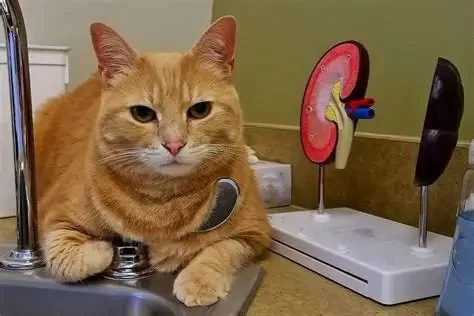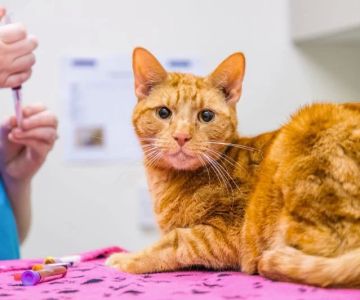Understanding Kidney Disease in Cats
Kidney disease is one of the most common chronic conditions affecting older cats, yet it often goes unnoticed until significant damage has occurred. The kidneys play a vital role in filtering waste and maintaining fluid balance, but as cats age, their kidneys lose efficiency. Detecting kidney disease early can make a major difference in your cat’s comfort and lifespan. Experts at Hidden Brook Veterinary emphasize that awareness and timely check-ups are the best defenses against silent organ decline.
1. Why Early Detection Matters
1.1 The Silent Nature of Kidney Disease
Feline kidney disease develops gradually, often with no obvious symptoms at first. By the time your cat appears visibly sick, up to 70% of kidney function may already be lost. That’s why regular monitoring and attention to subtle behavioral changes are crucial.
1.2 The Difference Early Diagnosis Makes
Early detection allows veterinarians to slow progression through diet, hydration management, and targeted medication. Cats diagnosed in early stages can live many years with good quality of life — a stark contrast to those treated only after severe symptoms appear.
2. Common Causes of Kidney Disease in Cats
2.1 Age and Genetic Factors
While aging is the primary cause of kidney deterioration, certain breeds such as Persians, Abyssinians, and Siamese are genetically predisposed. As your cat reaches its senior years (around age 7 and up), routine screening becomes essential.
2.2 Environmental and Dietary Triggers
Dehydration, poor-quality food, or exposure to toxins like antifreeze or lilies can also harm the kidneys. Feeding wet food and providing constant access to clean water help support healthy kidney function throughout your cat’s life.
2.3 Infections and Underlying Diseases
Chronic infections, high blood pressure, and hyperthyroidism can all contribute to kidney strain. Addressing these conditions early protects your cat’s kidneys from long-term damage.
3. Recognizing Early Warning Signs
3.1 Increased Thirst and Urination
One of the first indicators of kidney trouble is excessive drinking or urination. You might notice your cat visiting the litter box more often or even having accidents around the house. The kidneys’ reduced ability to concentrate urine leads to increased fluid loss, prompting your cat to drink more.
3.2 Subtle Weight Loss and Reduced Appetite
Cats with early kidney disease often begin to lose weight despite normal eating habits. Over time, their appetite may decline as toxins build up in the bloodstream. Monitoring your cat’s weight monthly can help you catch changes that might otherwise go unnoticed.
3.3 Dull Coat and Lethargy
A once-silky coat that becomes dull or matted can indicate metabolic issues. Cats with kidney disease may also seem tired or withdrawn. Because these symptoms are easy to overlook, it’s important to observe your cat’s behavior closely and report changes to Hidden Brook Veterinary.
4. Diagnostic Tools for Early Detection
4.1 Blood Tests and Urinalysis
Simple blood and urine tests can reveal early kidney dysfunction long before physical symptoms appear. Elevated creatinine, BUN (blood urea nitrogen), and SDMA levels often signal declining kidney efficiency. Urinalysis can also detect protein loss and concentration changes.
4.2 Blood Pressure and Imaging
High blood pressure is both a cause and effect of kidney disease. Measuring it regularly can help identify problems early. In some cases, ultrasounds or X-rays are used to assess kidney size, structure, and any possible obstructions.
4.3 Regular Preventive Screenings
Veterinarians recommend annual bloodwork for adult cats and biannual screenings for seniors. At Hidden Brook Veterinary, early diagnostic packages are available to detect organ stress before it becomes critical, allowing for proactive care and longer, healthier lives.
5. Home Monitoring and Care Tips
5.1 Watch Hydration Levels
Encourage your cat to drink more water by offering multiple bowls, fountains, or adding water to wet food. Proper hydration supports kidney filtration and helps flush out waste. Cats that primarily eat dry kibble are at higher risk for dehydration-related kidney stress.
5.2 Maintain a Balanced Diet
Feeding a high-quality, low-phosphorus diet can reduce strain on the kidneys. Some therapeutic diets are designed specifically for cats in early kidney disease stages and can slow progression significantly. Consult your vet before changing your cat’s diet to ensure proper nutrition.
5.3 Monitor Weight and Appetite
Track your cat’s eating habits and body condition regularly. Sudden changes — even slight ones — can be early red flags. If your cat starts skipping meals or losing interest in food, contact your veterinarian right away.
6. Real-Life Example: Milo’s Early Diagnosis
Milo, a 10-year-old tabby, started drinking more water and sleeping near his water bowl. His owner assumed it was just due to summer heat, but a routine exam at Hidden Brook Veterinary revealed elevated kidney values. Because it was caught early, Milo began a kidney-friendly diet and fluid therapy. Two years later, he’s still playful, proving that early detection truly saves lives.
7. How to Support Your Cat After Diagnosis
7.1 Follow a Treatment Plan
Your vet may recommend prescription diets, subcutaneous fluids, and medication to manage symptoms. Regular check-ups ensure that treatments remain effective and adjusted to your cat’s needs.
7.2 Reduce Stress
Chronic stress can worsen kidney problems. Provide a calm environment, consistent feeding schedule, and quiet resting areas. Cats thrive when their surroundings feel safe and predictable.
7.3 Stay Consistent With Veterinary Visits
Kidney disease requires ongoing monitoring. Even if your cat seems well, follow-up blood tests are essential. Veterinarians at Hidden Brook Veterinary offer personalized monitoring plans to keep your cat’s health stable and comfort optimized.
8. Preventing Kidney Disease Before It Starts
Prevention is always better than cure. Provide your cat with plenty of fresh water, balanced nutrition, and regular vet visits. Avoid household toxins and never give medications without veterinary guidance. Most importantly, stay observant — your awareness is your cat’s best protection against hidden illnesses.
With proactive care, early testing, and expert guidance from Hidden Brook Veterinary, you can help ensure your cat enjoys a long, healthy, and vibrant life — one filled with comfort, companionship, and purring contentment.












